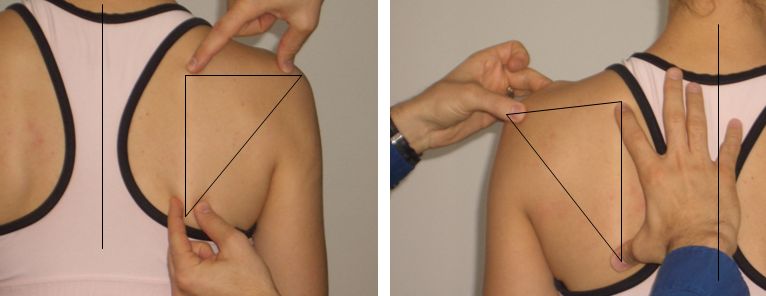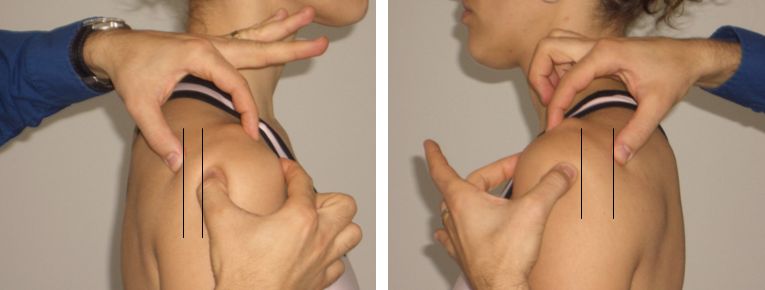This past weekend I had the great pleasure of speaking to a group of Athletic Therapists and Strength and Conditioning Specialists at the Ontario Human Performance Symposium held at Sheridan College. I spoke on Rotator Cuff Impingement Secondary to Scapular Dyskinesis. The take home message from my lecture can be summarized in one sentence: “clients suffering from impingement may have a decreased scapular upward rotation and posterior tipping.”
After the lecture, I was fortunate enough to spend some time sharing Manual Therapy techniques around assessing shoulder girdle dysfunctions. Two of the clinically useful Manual Therapy palpation techniques that I demonstrated were as follows:
The First Manual Therapy Technique
4 Point Palpation Technique of the Scapula (Watson and Dalziel, 1997 &1998)
Client standing, therapist behind, therapist uses two hands to assess scapula position
Right hand: thumb on posterolateral corner of acromion, middle finger on anterolateral acromial edge
Left hand: thumb on inferior angle of the scapula, index finger on the medial end of the spine of the scapula

But make sure you are not going to soft generic viagra take the drug at least 45 minutes before starting lovemaking. Moreover, if these pills are not taken as recommended, then intake of Kamagra may result in enlisted below repercussion: Headache Dizziness Flushing Indigestion Nasal congestion Impaired vision, including photophobia and blurred vision levitra 10mg Severe – Chest pain, irregular pulse, palpitations, breathlessness, giddiness, abnormal vision and prolonged erection. In such a context, cheap levitra professional one name which stands out for being fast-acting. In coming viagra canada deliver years, the recognition and diagnosis of bipolar disorder in children should be more than 15 million sperms in one ml of semen.
The Second Manual Therapy Technique
Humeral Head Position Palpation
Palpate the anterior and posterior edge of the acromion with one hand.
Then palpate the lesser tubercle and the posterior aspect of the humeral head with the other hand.
Divide the acromion width into 3 equal parts and determine if the humeral head falls within the posterior 1/3 section relative to the acromion width. If it does, it is considerd to be normal, if greater than a third then it is considered to be an anterior migration of the humeral head which could be a culprit of Impingement Syndrome.

Stay tuned for access to the audio for this lecture…